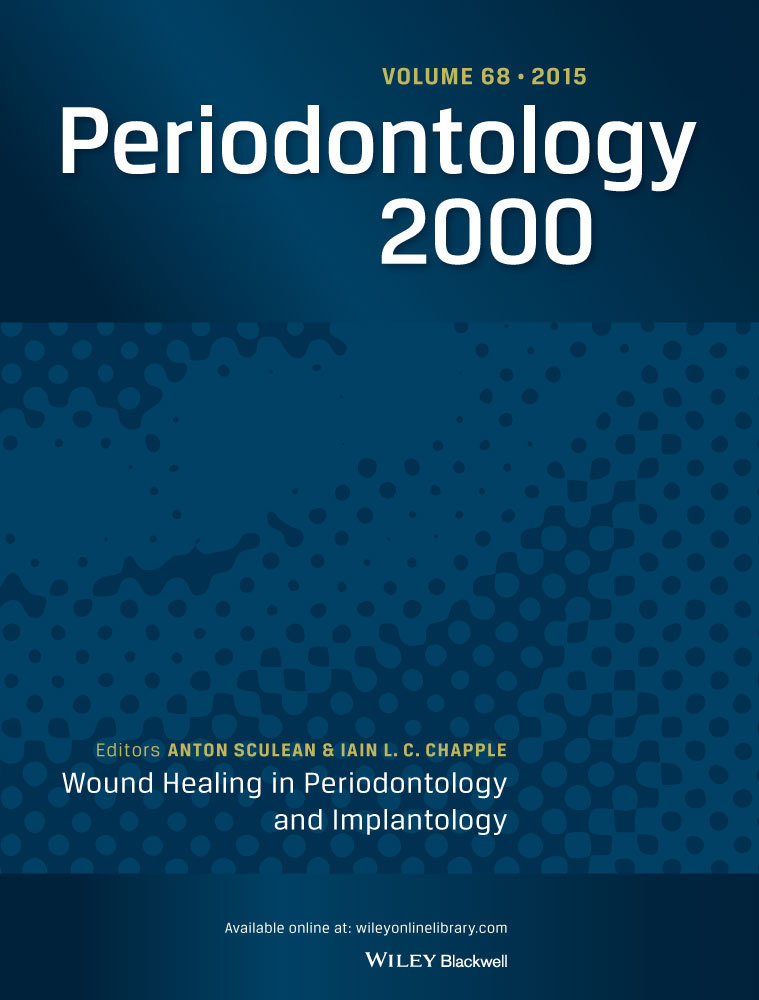传统非再生牙周缺损治疗的长期稳定性。
IF 15.7
1区 医学
Q1 DENTISTRY, ORAL SURGERY & MEDICINE
引用次数: 0
摘要
多根牙的分叉累及(FI)由于其复杂的解剖结构和难以实现有效的维护,给牙周治疗带来了重大挑战。FI与牙周破坏增加有关,特别是在分叉入口狭窄和根凹深的部位。这些特征阻碍了有效的清创,损害了牙周治疗的效果。材料和方法:本文回顾了治疗FI的非再生治疗方法,重点关注与皮瓣手术、生物根重塑、根截肢、根分离和根隧道相关的临床结果和失败率。结果非再生手术表现出不同的结果。报道的失败率包括:根截断20.1%(范围:0%-61.1%),根分离18.8%(范围:2.9%-38%),根隧穿20.9%(范围:7.1%-42.9%)。这些变化受FI严重程度、根形态和患者卫生等因素的影响。结论:FI的有效治疗需要准确的诊断、合理的治疗选择和个性化的维持方案。长期成功与病例选择和患者对牙周维持护理的承诺密切相关。临床意义了解非再生方法在FI病例中的治疗预后和局限性对于优化长期治疗结果至关重要。临床医生在选择治疗方式时应强调维持策略并考虑解剖学上的挑战。本文章由计算机程序翻译,如有差异,请以英文原文为准。
Long-term stability of conventional non-regenerative periodontal treatment for furcation defects.
BACKGROUND
Furcation involvement (FI) in multi-rooted teeth poses significant challenges in periodontal therapy due to complex anatomy and difficulty in achieving effective maintenance. FI is associated with increased periodontal destruction, especially in sites with narrow furcation entrances and deep root concavities. These features hinder effective debridement and compromise the efficacy of periodontal treatments.
MATERIALS AND METHODS
This narrative review examines non-regenerative treatment approaches for managing FI, focusing on clinical outcomes and failure rates associated with flap procedures, biologic root reshaping, root amputation, root separation, and root tunneling.
RESULTS
Non-regenerative procedures show variable outcomes. Reported failure rates include 20.1% for root amputation (range: 0%-61.1%), 18.8% for root separation (range: 2.9%-38%), and 20.9% for root tunneling (range: 7.1%-42.9%). These variations are influenced by factors such as FI severity, root morphology, and patient hygiene.
CONCLUSION
Effective management of FI requires accurate diagnosis, appropriate treatment selection, and individualized maintenance protocols. Long-term success is closely tied to case selection and the patient's commitment to ongoing periodontal maintenance care.
CLINICAL RELEVANCE
Understanding the therapeutic prognosis and limitations of non-regenerative approaches in FI cases is essential for optimizing long-term treatment outcomes. Clinicians should emphasize maintenance strategies and consider anatomical challenges when selecting treatment modalities.
求助全文
通过发布文献求助,成功后即可免费获取论文全文。
去求助
来源期刊

Periodontology 2000
医学-牙科与口腔外科
CiteScore
34.10
自引率
2.20%
发文量
62
审稿时长
>12 weeks
期刊介绍:
Periodontology 2000 is a series of monographs designed for periodontists and general practitioners interested in periodontics. The editorial board selects significant topics and distinguished scientists and clinicians for each monograph. Serving as a valuable supplement to existing periodontal journals, three monographs are published annually, contributing specialized insights to the field.
 求助内容:
求助内容: 应助结果提醒方式:
应助结果提醒方式:


